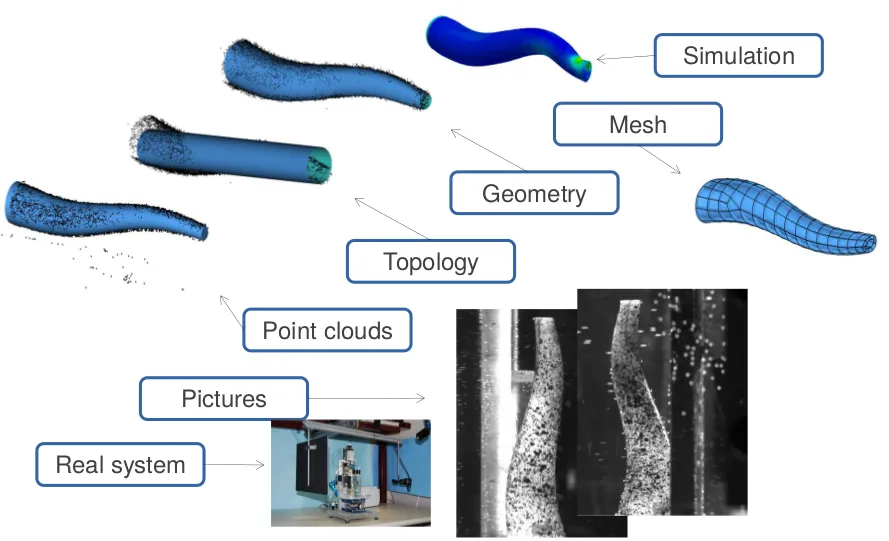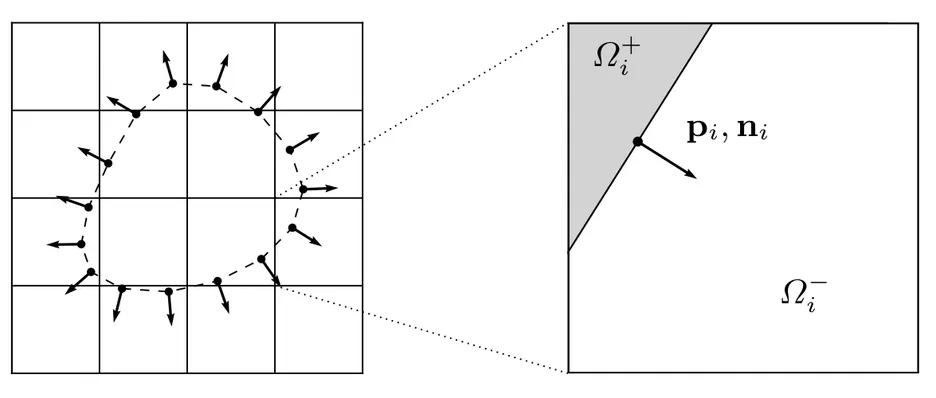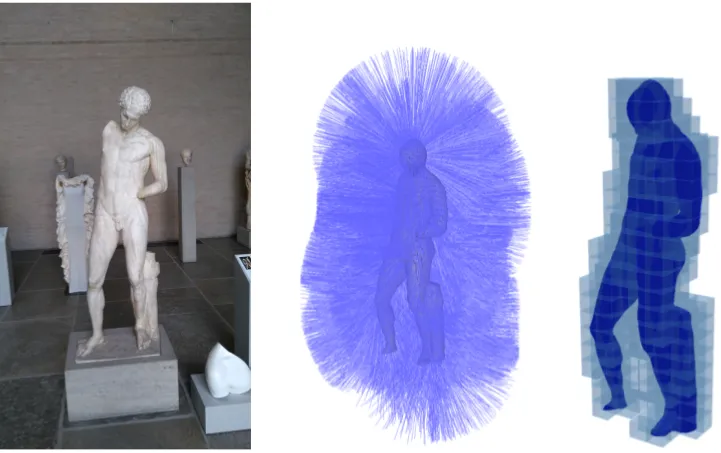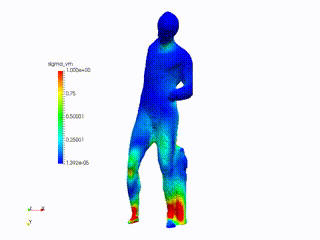Image-Based Finite Element Analysis
Team Members: Lazlo Kudela, Stefan Kollmannsberger, Ernst Rank
Funding: GIF Grant No: I-1189-89.2/2012, internal funds
Duration: 01-2014-06.2015, 07.2015-10.2019
Project description
Setting
The reconstruction of three-dimensional objects from images is a widely applied approach in many engineering fields. The main goal of these techniques is to transform the pixel data that are available in the images into a–potentially application dependent–three-dimensional representation. Apart from standard applications, there has been an increasing interest towards methods that provide three-dimensional geometric representations which are suitable for numerical analysis by means of the Finite Element Method (FEM). The research conducted at the chair for Computation in Engineering addresses the possibilities of coupling photo-based shape measurement techniques to FEM and its derivatives, e.g. the Finite Cell Method.
Image-based finite elements: the standard approach
Traditional approaches employ a multi-stage procedure which progressively transforms the pixel data in the images of a given object towards an analysis-suitable high-order finite element mesh (see Figure below). The goal of generating a mesh of high order elements is motivated by the superior approximation properties of p-FEM compared to standard, linear finite elements, especially for smooth problems. Such problems arise for example in the field of biomechanics, especially in the study of the biomechanical behaviour of soft human tissues.

Point cloud-based Finite Cell Method
Since mesh generation represents a severe bottleneck in the complete analysis pipeline, alternative approaches, like the Finite Cell Method (FCM) may be applied. In its simplest implementation, the only information that the FCM needs from the analysis geometry is point membership information: given a point in space, does this point belong to the geometry of interest or not?
In the context of shape measurement techniques, the point clouds stemming from photogrammetric algorithms are equipped with normal vectors: they carry information about the orientation of the local tangent plane associated to the given point. This information is precisely enough to carry out the necessary point membership tests required by the FCM.

To determine whether a given query point q is located within the geometric model or not, the following steps are performed:
-
Find the point pi and its associated normal vector ni that lies closest to q.
-
Evaluate

3. If d < 0, then q lies outside the domain. Otherwise, it lies inside.
The possibility to perform inside-outside queries directly on the point-cloud representation of the geometric model allows for significant simplifications in the image-to-analysis pipeline: the steps for recovering a geometric model and the generation of an analysis-suitable mesh become unnecessary, making the whole procedure easier. This way, a seamless connection between image-based shape measurements and numerical analyses can be established.
Example: static analysis of the statue “Athlete” from the Glyptothek, Munich
The statue was recorded by a commercial cell-phone camera and processed by VisualSFM, an open source Structure-From-Motion software. The results depict the deformation and stresses of the statue under its self weight.


Selected Publications
| ▪ | Kudela, László; Kollmannsberger, Stefan; Almac, Umut; Rank, Ernst: Direct Structural Analysis of Domains Defined by Point Clouds Computer Methods in Applied Mechanics and Engineering 358, 2020 | |
| ▪ | Kollmannsberger, S.; Kudela, L.; Rank, E.: Structural analysis of domains defined by point clouds In: Photogrammetric Image Analysis 2019, Munich, Germany, 2019 | |
| ▪ | Kollmannsberger, S.; Kudela, L.; Rank, E.: Structural analysis of domains defined by point clouds In: High-Order Finite Element and Isogeometric Methods, Pavia, Italy, 2019 | |
| ▪ | Kudela, L.; Almac, U.; Kollmannsberger, S.; Rank, E.: Direct numerical analysis of historical structures represented by point clouds In: EUROMED 2018: International Conference on Digital Heritage, Cyprus, 2018 | |
| ▪ | Kudela, L.; Kollmannsberger, S.; Rank, E.: An immersed boundary approach for the numerical analysis of objects represented by oriented point clouds In: CompIMAGE’18 – Computational Modeling of Objects Presented in Images: Fundamentals, Methods, and Applications, 2018 | |
| ▪ | Kudela, L.; Frischmann, F.; Yossef, O.; Uzan, A.; Kollmannsberger, S.; Yosibash, Z.; Rank, E.: Image-based mesh generation of tubular geometries under circular motion in refractive environments Machine Vision and Applications, 2018 DOI: 10.1007/s00138-018-0921-3 | |
Weblinks and press releases
https://globalshakers.com/new-scanning-method-could-make-it-easier-to-protect-ancient-monuments/
https://www.tum.de/nc/die-tum/aktuelles/pressemitteilungen/details/35843/
https://www.pro-physik.de/nachrichten/handy-stabilitaet-antiker-bauwerke-pruefen
https://www.baublatt.ch/baupraxis/mit-der-handykamera-die-statik-von-bauwerken-ueberpruefen
https://www.ingenieur.de/technik/fachbereiche/bau/mit-dem-handy-bild-bauwerke-statisch-berechnen/